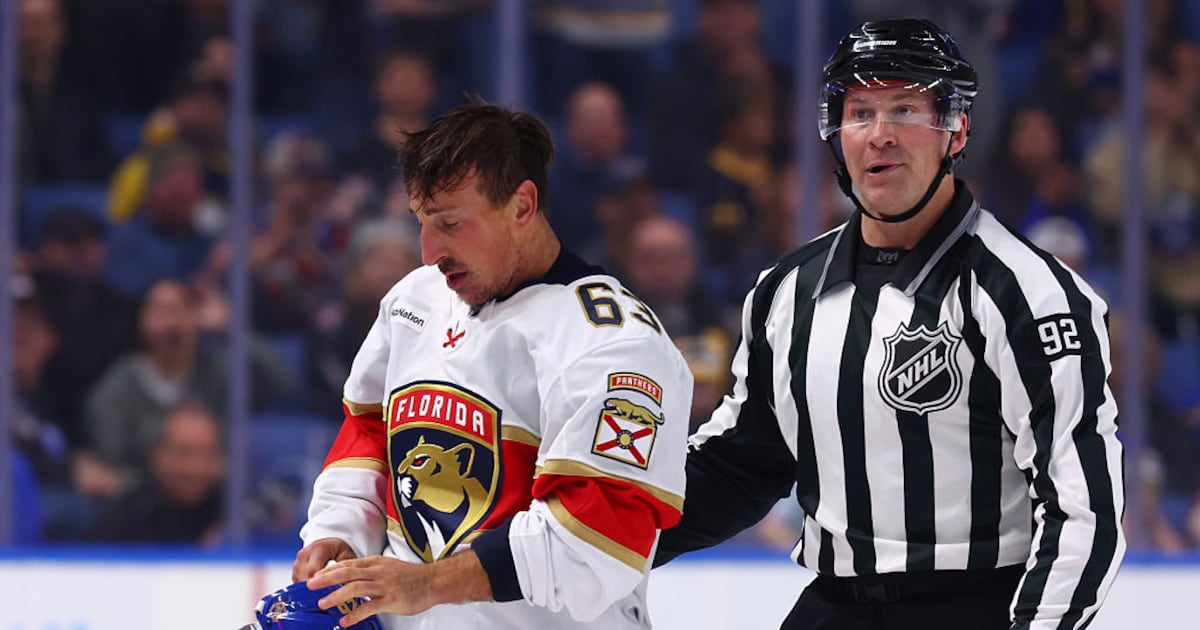Are we amidst another undisciplined October, or are National Hockey League officiating standards tightening across the league?
It’s an important question to explore. Penalties are up, and with that comes more opportunities for power plays around the league, which have shown a steady increase in rate scoring over the past two decades.
Teams reliably average about 7.5 goals per 60 minutes played on the power play since the pandemic-shortened 2020-21 season, which has put real pressure on undisciplined clubs and their respective penalty kills for years now:
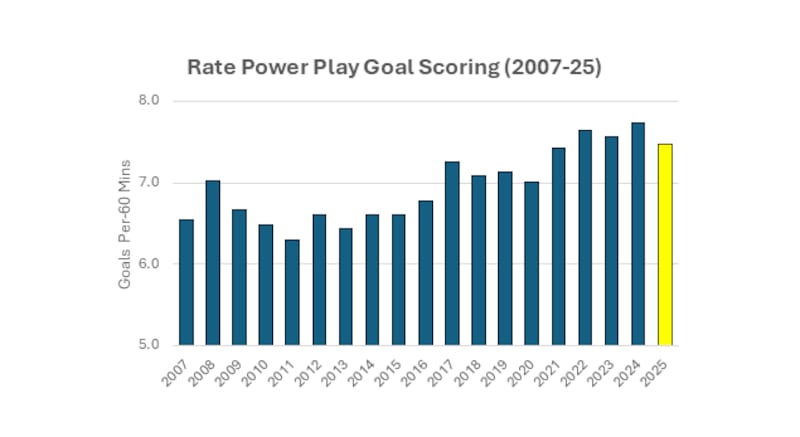 Yost 1
Yost 1
Whether this year’s rate scoring is marginally down or just a function of some noise (expected goal rates on the power play this season are notably at an all-time high), it remains imperative to play a disciplined brand of hockey.
Part of that is having skaters throughout your lineup who do not put themselves in chasing or vulnerable positions, where stick or interference-type infractions are common.
Another part of it is having skaters who can draw penalties – players who can regularly bait the opposition into minor penalties create real goals (and by extension, wins) for their team in the standings. Over an 82-game season, it can have a meaningful impact.
The other element worth monitoring here is the behaviour of the officials. The NHL, like every other major sports league, will periodically review both the frequency and magnitude of penalties its officials are calling. In 2017-18, the league put a laser focus on slashing penalties, and in 2021-22, there was a concerted effort to crack down on cross-checking. Understanding how games are going to be officiated can be just as important as having the right mix of players in your lineup to drive positive penalty differentials.
And while it’s premature to call this a trend, the league should take notice of what appears to be a tighter officiating standard to start this season. Compared to recent seasons, October 2025 has seen a surge of penalty calls and corresponding man advantages:
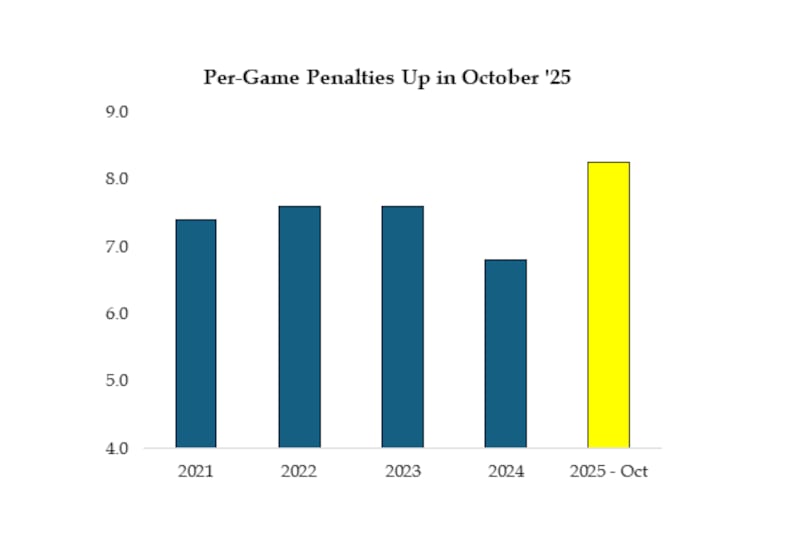 Yost2
Yost2
Whenever you see a jump in a rate measurement like this, it’s worth analyzing whether it’s a function of broad changes (i.e. tighter standards for enforcing penalty calls on the ice), a distinct initiative (such as the aforementioned slashing and cross-checking enforcement efforts in years past), or something else.
When we break the penalty data down by individual calls, you see it’s very much the first group – most of the common minor penalties are up, with tripping remaining at the top of the list:
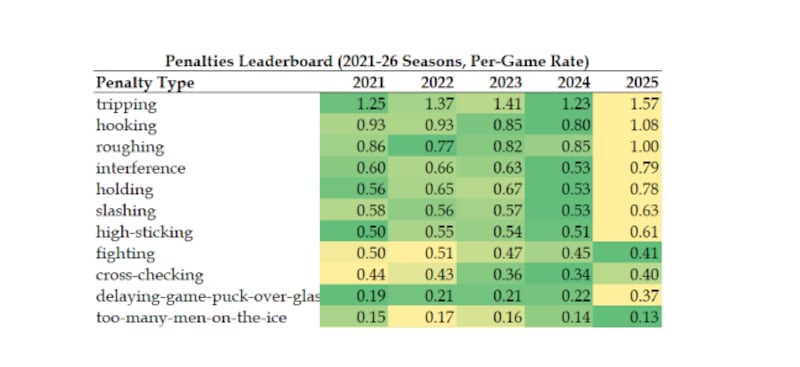 Yost3
Yost3
I also wanted to check if any teams are disproportionately driving the rate of penalty calls, both as a function of their ability to draw penalties regularly as well as the undisciplined lot who routinely see their penalty kills on the ice.
On a per-game basis, here’s how each team is performing by penalties per-game. Into Sunday’s action, it was the Chicago Blackhawks and Buffalo Sabres leading the way in the undisciplined category, with the defence-minded Washington Capitals and New York Rangers staying out of the penalty box:
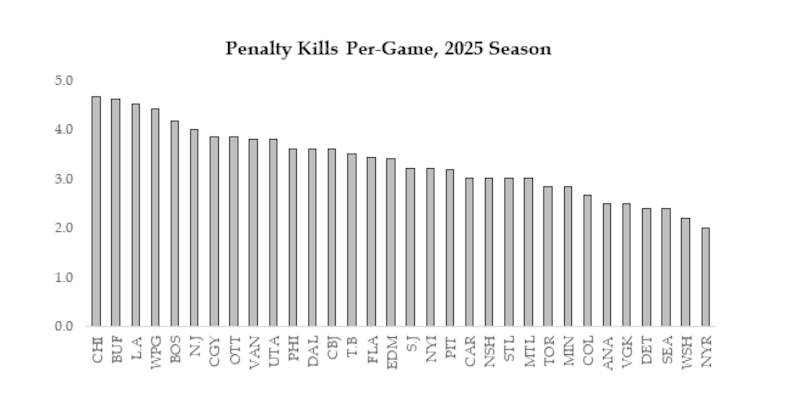 Yost4
Yost4
Interesting data to say the least, and it’s worth acknowledging that officiating standards can (and frequently do) change in the middle of a season. In years past, a very conservative whistle to start the year evolves into a very liberal whistle by year-end.
We will have to wait and see if that manifests itself again in 2025-26, but for now, clubs should take heed: the penalty box is open, and NHL officials are more than willing to fill it up right now.
Data via NHL.com, Hockey Reference, Natural Stat Trick

